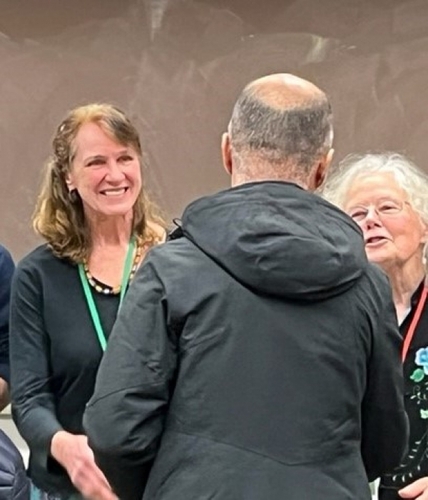BRATTLEBORO — Experiential education has been at the core of all School for International Training/World Learning programs since the start of the organization in 1932. Whether it's spending a summer abroad, attending a semester of studies abroad, or participating in one of our graduate programs here in Vermont, the emphasis has always been on experience, participation, reflection, and discussion.
This same approach was evident in a recent training program for our new neighbors, a group of Afghan refugees.
When we learned that nearly 100 Afghan people were to arrive in Brattleboro and that SIT/World Learning had partnered with the Ethiopian Community Development Council (ECDC) to help resettle them, a group of professors from SIT met to see how we could help to orient and prepare the refugees for life in the United States.
Our group of three professors emeriti, two retired professors, and two current SIT faculty members began meeting in late November to develop plans to provide the refugees with English instruction and cultural orientation, two areas in which SIT has been engaged over many years.
Being part of this group was the highlight of my retirement. In this new effort, I was going to work once again with five of my former students of decades ago - currently all professional educators - and one colleague. We were all enthusiastically engaged in this project and learning together once again.
* * *
About two weeks before their arrival, we were told that the refugee families included children, some of whom would be arriving with both parents and some with just their mothers. What to do? SIT never had a day care center, and our campus was not set up for children.
The solution was to replicate classrooms like those we had established years before in Thailand, when we ran refugee camps there.
We established play centers in the back of the classrooms where parents would be learning. To keep the children occupied and entertained, we created positions of “child minders” - volunteers who engaged the children in the room while the adults were in class.
The volunteers who took on this role included a former child psychologist and former elementary school teachers. Based on our experience in the refugee camps of Southeast Asia, we felt confident this strategy would work well, and we were not wrong.
* * *
Many graduates of the SIT TESOL (Teachers of English to Speakers of Other Languages) program remain in the Brattleboro area, and we were able to engage enough of them to teach the entire group of 92 refugees, some of them children, at various levels of proficiency.
Throughout the entire experience, we were once again living the motto upon which the Experiment in International Living was founded 90 years ago: “Expect the unexpected.”
As the program began, we still did not know how many students to expect or when they would arrive. All 92 individuals arrived gradually over time. We also had no advance information about their ages, their genders, their languages, or their educational levels.
The refugees were arriving from U.S. military bases, where they had been housed since their rapid evacuation from Afghanistan in August, so we assumed they had some knowledge of English. But without this information, we had to constantly revise our plans.
* * *
When the students finally got here, we all found what was indeed a linguistic challenge for them - and for us! Several had good English proficiency, some knew limited English, others knew none at all.
And to add to this challenge, several were illiterate in their languages or had never been to school. For all our sessions, then, we relied on an interpreter, and we used our Google Translate app to communicate.
Initially, most students were quite shy. Many had no idea where they were. They had been told they would be going to a university, but our rural SIT campus seemed to them more like a camp than a university setting.
Classes were held Tuesdays through Thursdays for two hours each day. On Mondays, they had a session on U.S. cultural orientation to give context to the language classes. As the weeks went by, our new neighbors began to be able to communicate better, to feel comfortable in their new surroundings, and even to refer to their dorms as “home.”
In the beginning, it was difficult for us to learn names that were unfamiliar to us, and masks did not help. Eventually, however, we began to remember names, who was married to whom, who was the parent of which child.
As time went on, some of the men started to miss class as they secured jobs in the area. Families began to move into town, and some of the children began to attend local schools.
* * *
Although we have now finished this pilot project, the challenges for our new neighbors will certainly continue for some time.
Most of the refugees are now living in Brattleboro, Bennington, or Bellows Falls. They are now entrusted to the kindness and welcoming attitude of others in this area.
Our volunteer group still gets together to reflect on the process and on how we were challenged to use our skills and our imaginations to create a program and an experience with our Afghan friends for their new life here in Vermont.
Our deep and heartfelt thanks go the volunteer teachers who have given our new neighbors a good basis on which to feel more comfortable in this area and to keep learning English. And thanks also to the child minders. Without them, the adults would not have had an opportunity to participate.
For us, the seamless team, the experience will remain in our minds and hearts for a long time. We hope we gave our new neighbors the tools they need to make Vermont their new home.
